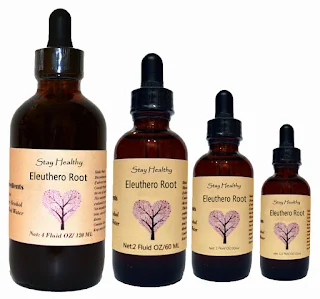Lotta people have no idea that we have herbs that are grown naturally that provide benefits for us. When you take certain herbs and combine them, you make them stronger, making them very beneficial to consume because it helps us out with a lot of things. Herbs can increase overall performance, detox the body, cleanse the body and upregulate the body's hormones and vitality. It's important to take care of your body and if you don't, you will feel the consequences such as fatigue, loss of energy and performance, strength, and so forth. These herbs will help increase your performance, but it's no cure. You must have a proper lifestyle and regime in order for these herbs to work.
Let me know what you think about these herbs that I'll be listing below. By taking these herbs, it provides benefits rather than having side effects from taking drugs such as sarms, steroids, etc. Plants and herbs have naturally occurring elements that help boost testosterone, stamina, strength, endurance, and so forth. It takes time however to see results. One or two days isn't enough to see its full potential; So allow your body to accumulate these herbs over time to see drastic improvements and results.
Astragalus (Astragalus membrananceus)
is famous, in traditional Chinese herbalism, for “building blood”. It also supports immune function, often an important consideration for athletes. You can simmer a few tablespoons of the root with vegetables and/or bones when making a soup stock, or take about 500-1,000mg twice a day as a capsule or extract.
Curcumin from Turmeric (Curcuma longa)
has a host of beneficial functions in the body, but for athletes one of its most important is the ability to support a healthy response to the inflammation that follows exercise and exertion. Herbalists consider turmeric to have a special affinity to the liver, and the combination of support for this vital detox organ plus also supporting the body’s response to post-exercise inflammation makes it a good choice for daily maintenance, especially during more intensive phases of training. To this end, we usually use about 500mg of curcumin, or alternatively, 3,000 to 4,000mg of whole, ground turmeric root twice daily. In either case, take your turmeric preparations with a little black pepper and in the middle of a meal.
Fish oil and other omega-3 fatty acid sources
(from leafy greens or flax seed for example) are another class of nutrients essential for supporting a healthy response to inflammation associated with exercise or heavy exertion. We suggest 2g daily for maintenance, and up to 4-6g daily during peak, intensive training.
Dan shen (Salvia miltiorrhiza)
is a root, deep red in color, that is used in Chinese medicine to “move blood”--a traditional energetic description for botanicals that support normal circulation. We usually suggest a liquid extract, in doses of 1 mL to 5 mL, taken once or twice a day.
Hawthorn berries, Blueberries, and other colorful berry fruits
are fantastic sources of bioflavonoids which support good circulation, support a healthy response to inflammation after exertion, and support the heart and capillaries so they can continue to perform as efficiently as possible.
Rhodiola (Rhodiolarosea)
is the root of an Arctic plant traditionally used to support stress and counteract fatigue. Exercise is perhaps the “purest” embodiment of physical stress on the system, and Rhodiola can help both in the short term (before a race, e.g.) and long term by pushing back the threshold of fatigue and getting us ready for the next workout by supporting good recovery 4. Try a liquid extract, using about ½ teaspoon once or twice a day during training, or ½ to 1 teaspoon before a challenging workout or race.
Eleuthero (Eleutherococcus senticosus, formerly known as Siberian ginseng)
is a classic athlete’s tonic. It was first researched in Russia to enhance the stamina of its soldiers and cosmonauts, but quickly found its way into the athletic programs as well. 2-3 g of the root are consumed daily, as a capsule or simmered for 10 minutes and strained into a tea
Cordyceps (Cordyceps sinensis, C. militaris)
is a mushroom, not an herb, and there is some conflicting research showing that it may promote exercise performance and endurance when taken regularly, with a special focus on supporting cardiovascular health and the aerobic system 5. Typically between 500 and 1000mg are consumed daily.*
Arnica
is used topically as an oil or gel, and internally as a homeopathic remedy (usually the latter is at a 30C potency). It supports the recovery process. Arnica can be combined with horsechestnut and these two herbs make a good synergy
Ginger
makes an excellent compress after exercise or for specific areas around a joint or tendon following exertion. Brew a strong tea by steeping 1 TBS of powder in a cup of hot water for 5 minutes, then soak a cloth with the tea and apply topically once or twice a day.
Wintergreen essential oil
is another excellent liniment. It’s a bit too strong to use “neat”, or undiluted, so use about 10-15 drops of oil in 1 ounce of a carrier oil such as olive or grapeseed oil. It has a very cooling quality, and works well in alternation with the ginger compress.
Horsechestnut
is a remedy often used internally to support vein health, but it can help with recovery following exertion and is applicable throughout the body. In Europe, it is also used topically for the same reasons. The liquid extract is a great way to use this plant both ways: 45 drops twice a day internally, and rubbed directly onto the affected area topically twice a day.
COMMENT BELOW YOUR QUESTIONS OR COMMENTS
FOLLOW @OI.STRENGTH ON INSTAGRAM
SHARE THIS ARTICLE - HELP SPREAD THE WORD AND HELP OTHERS











